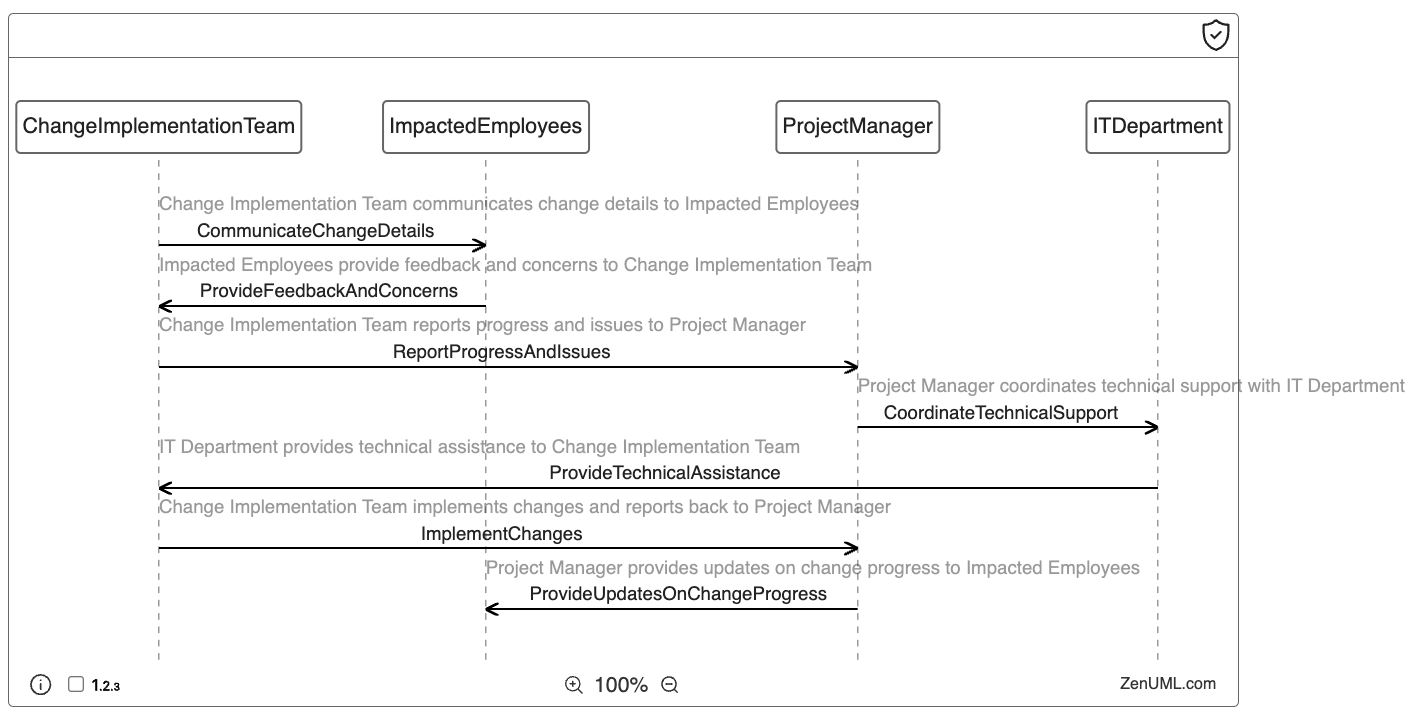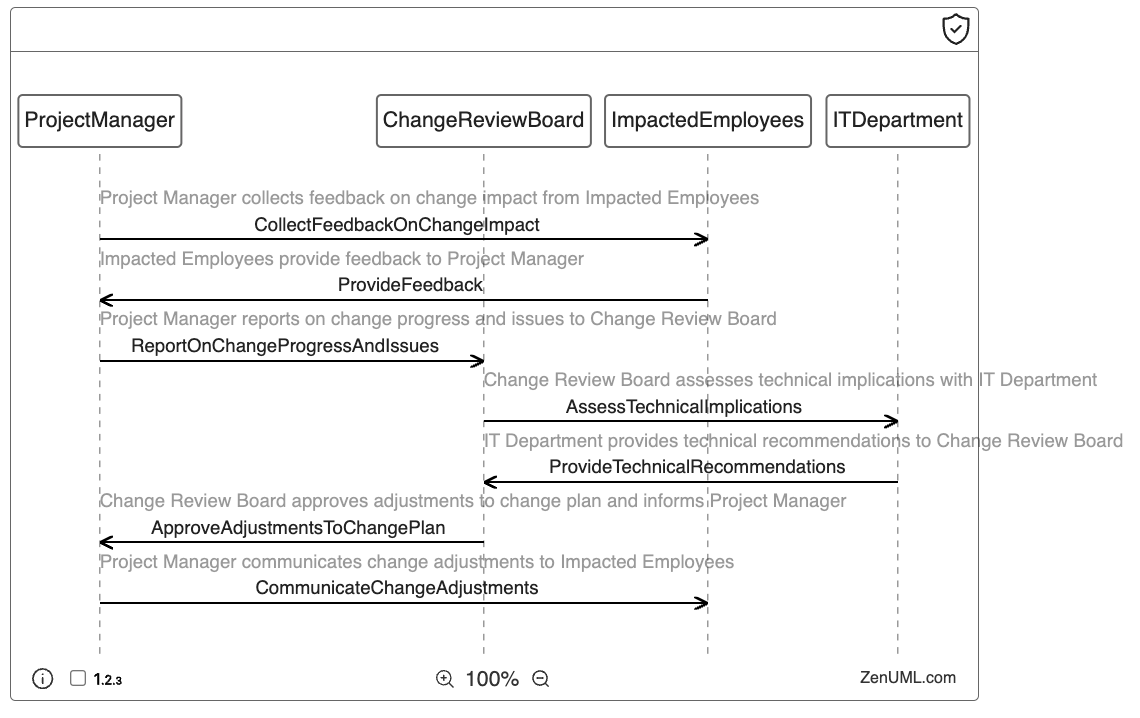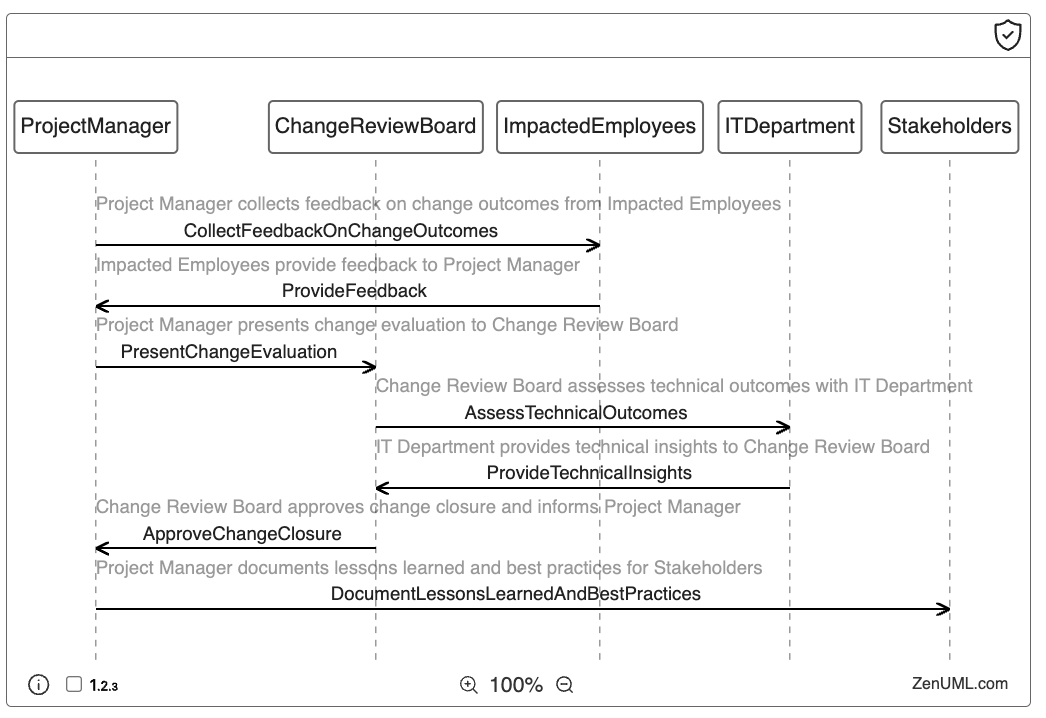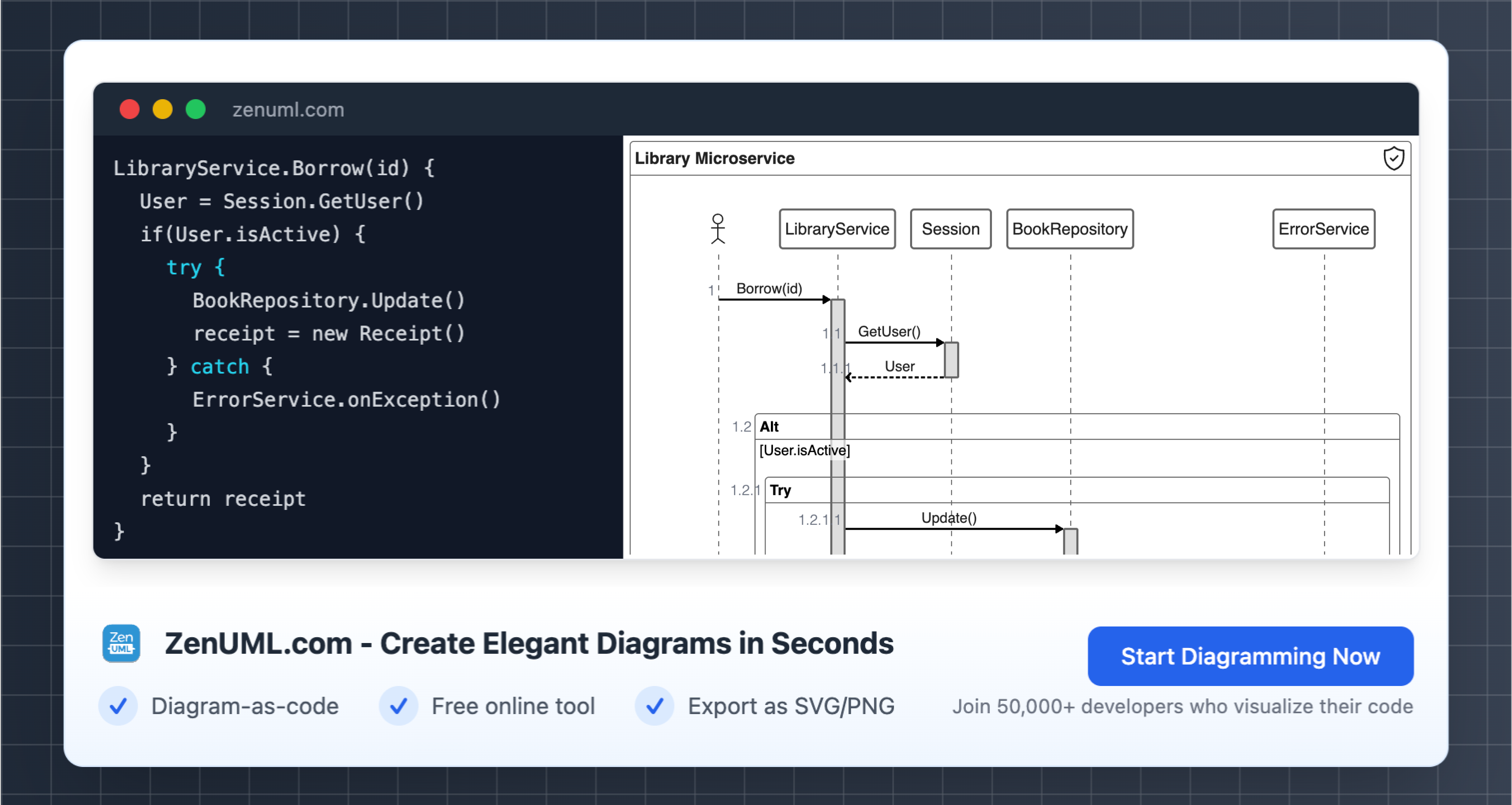Introduction
In today's rapidly evolving business landscape, the ability to effectively manage change is paramount. Whether it's adapting to new regulations, implementing innovative technologies, or responding to shifting market demands, organizations must have a robust and efficient change management process in place. One powerful tool that can greatly enhance this process is the use of sequence diagrams, specifically ZenUML sequence diagrams.
Change management is a crucial aspect of organizational success, as it helps ensure that changes are implemented smoothly, with minimal disruption to ongoing operations. However, navigating the complexities of change management can be a daunting task, especially for businesses with intricate workflows and diverse stakeholders. This is where the integration of sequence diagrams can revolutionize the way organizations approach and manage change.
Understanding the Change Management Process
The change management process typically involves a series of defined steps that guide organizations through the implementation of changes. These steps may include:
- Initiating Change: Identifying the need for change, evaluating the potential impact, and gaining stakeholder buy-in.
- Planning Change: Developing a detailed plan that outlines the steps, timelines, and resources required for the change.
- Implementing Change: Executing the change plan, communicating with affected parties, and addressing any issues or resistance that may arise.
- Monitoring and Controlling Change: Continuously tracking the progress of the change, making necessary adjustments, and ensuring the desired outcomes are achieved.
- Closing the Change: Evaluating the success of the change, documenting lessons learned, and incorporating feedback into future change initiatives.
Leveraging Sequence Diagrams for Change Management
Sequence diagrams, particularly ZenUML sequence diagrams, can be a powerful tool in visualizing and streamlining the change management process. These diagrams provide a clear, step-by-step representation of the interactions and communications between different entities involved in the change management process.
1. Initiating Change
When initiating a change, it's crucial to identify the key stakeholders, their roles, and the communication channels between them. A ZenUML sequence diagram can help illustrate this process, as shown in the example below:

By visualizing the interactions between the various stakeholders, the sequence diagram helps ensure that the change initiation process is transparent, well-coordinated, and aligned with the overall organizational objectives.
2. Planning Change
After the change initiative has been approved, the next step is to develop a detailed plan for its implementation. A ZenUML sequence diagram can be used to map out the various tasks, responsibilities, and timelines involved in the planning process, as shown in the example below:

By visualizing the planning process, the sequence diagram helps ensure that all necessary steps are accounted for, and that the responsibilities and dependencies between different team members and departments are clearly defined.
3. Implementing Change
During the implementation phase, it's crucial to monitor the progress of the change, address any issues or resistance that may arise, and ensure that the change is being executed as per the plan. A ZenUML sequence diagram can be used to illustrate the communication and feedback loops involved in the implementation process, as shown in the example below:

By visualizing the implementation process, the sequence diagram helps ensure that communication channels are open, feedback is actively collected and addressed, and the change is being implemented according to the plan.
4. Monitoring and Controlling Change
As the change is being implemented, it's essential to continuously monitor its progress and make necessary adjustments to ensure the desired outcomes are achieved. A ZenUML sequence diagram can be used to depict the various feedback loops and control mechanisms involved in the monitoring and controlling process, as shown in the example below:

By visualizing the monitoring and controlling process, the sequence diagram helps ensure that the change is being continuously evaluated, adjustments are made in a coordinated manner, and stakeholders are kept informed throughout the process.
5. Closing the Change
The final step in the change management process is to close the change initiative, evaluate its success, and document lessons learned. A ZenUML sequence diagram can be used to illustrate the steps involved in this phase, as shown in the example below:

By visualizing the closing process, the sequence diagram helps ensure that the change initiative is properly evaluated, feedback is collected from all stakeholders, and the lessons learned are documented for future reference.
Conclusion
In the fast-paced and ever-changing business landscape, the ability to effectively manage change is crucial for organizational success. By leveraging ZenUML sequence diagrams, businesses can streamline their change management processes, enhance communication and collaboration, and ensure that changes are implemented seamlessly.
The examples provided in this blog post demonstrate how sequence diagrams can be used to visualize the various stages of the change management process, from initiating the change to closing the initiative. By adopting this approach, organizations can improve their change management capabilities, reduce the risk of disruptions, and ultimately, achieve their strategic objectives.
We encourage you to explore the power of ZenUML sequence diagrams and incorporate them into your organization's change management practices. By doing so, you'll unlock new levels of efficiency, transparency, and agility, positioning your business for success in the face of ever-evolving challenges.
Feel free to leave a comment below and share your experiences or insights on leveraging sequence diagrams for change management. We'd be glad to hear your thoughts and discuss ways to further enhance this valuable tool.
Try ZenUML now!
Zenuml detailed feature roadmap available here.

